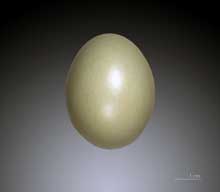Ring-necked pheasants are native to China and East Asia, but they have been successfully introduced in other parts of the world, including North America.
Males are vibrantly colored with blue-green heads, red face wattles, and distinctive white neck rings. Females are a rather plain buff brown, but both sexes have long, pointed tails. These beautiful birds are wily in the wild and much sought after by game hunters. Thousands of them are harvested each year, but management and reintroduction programs boost many populations.
 Males (also known as “cocks”) establish harems of hens—as many as a dozen female birds. Each spring a male delineates and defends his territory and his harem from aggressive rivals. Such encounters can lead to vicious battles.
Males (also known as “cocks”) establish harems of hens—as many as a dozen female birds. Each spring a male delineates and defends his territory and his harem from aggressive rivals. Such encounters can lead to vicious battles.
The birds prefer fields and farmlands with brushy cover, though they also inhabit woodland undergrowth and some wetlands. Females nest in fields or in border habitat and lay a dozen or more eggs, which they incubate with no help from the cock. Young pheasants grow up quickly and can fly within two weeks. They will remain with their mother for six or seven weeks. Many pheasant eggs are destroyed by predators or by humans (particularly in farm country), and young birds also have a high mortality rate.
In autumn, ring-necked pheasants form flocks in which they will live until the following spring.
These birds are most comfortable on the ground, where they forage for grains, seeds, berries, insects, and, occasionally, small animals. They can fly and launch themselves airborne with an abrupt, noisy takeoff, but typically run from trouble. Pheasant flights are merely short-distance dashes for cover.
Wings Over Colorado LLC
Phone: (720) 425-8968
Email @ rob@wingsovercolorado.com
Copyright © 2012 Wings Over Colorado. All Rights Reserved. Top ↑